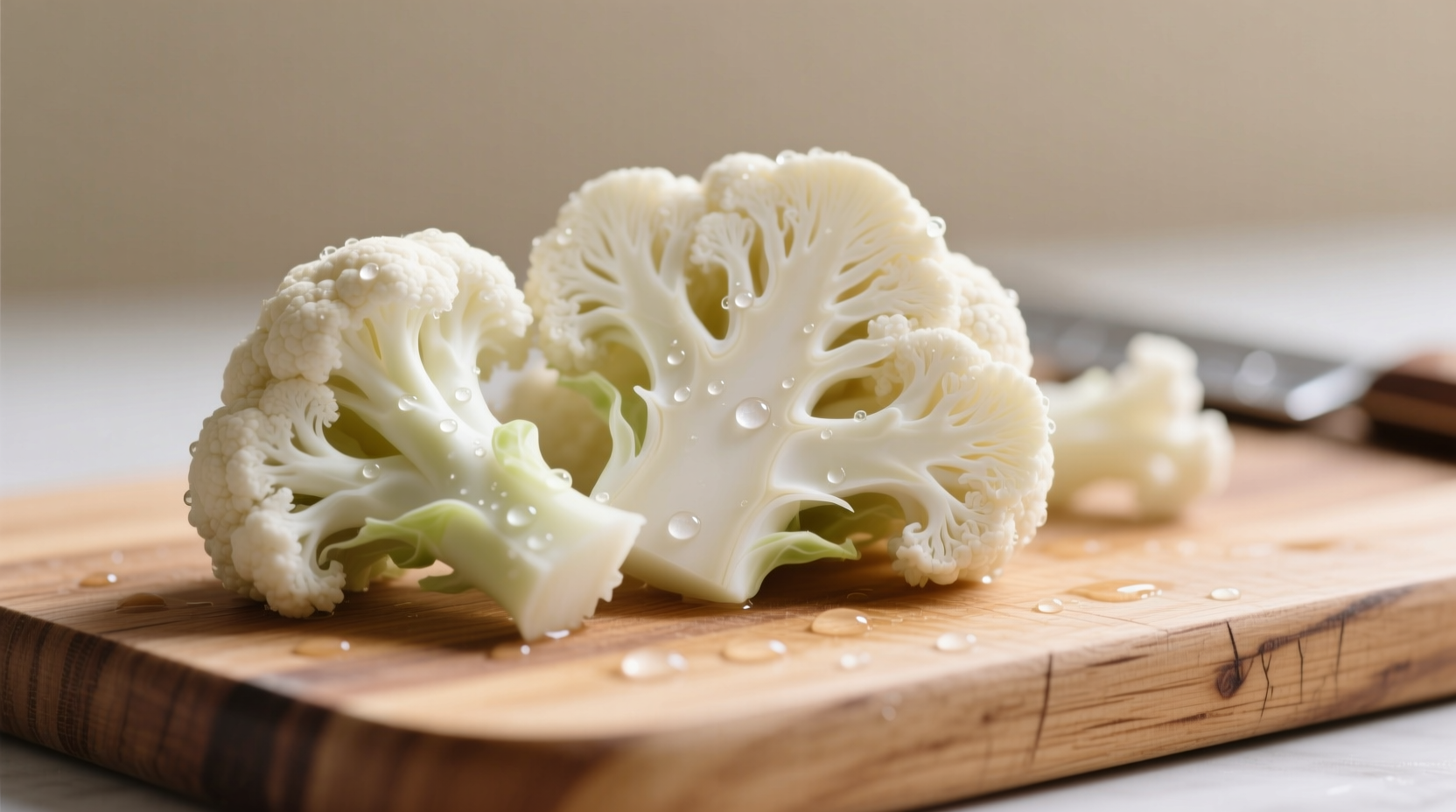Why Cauliflower Makes You Gassy: The Science Explained
If you've ever wondered why does cauliflower cause bloating, the answer lies in its unique composition. Cauliflower contains several components that challenge your digestive system:
- Raffinose - A complex sugar your body lacks the enzyme alpha-galactosidase to break down
- High fiber content - Particularly insoluble fiber that moves through your system intact
- Sulfur compounds - Which produce hydrogen sulfide gas during fermentation
When these components reach your large intestine, gut bacteria ferment them, producing hydrogen, carbon dioxide, and sometimes methane gas. This natural digestive process explains how cauliflower causes gas in many people.

Who's Most Affected by Cauliflower-Induced Gas?
Not everyone experiences the same level of gas from cauliflower. Your individual response depends on several factors:
| Factor | Low Gas Risk | High Gas Risk |
|---|---|---|
| Gut Microbiome | Diverse bacterial balance | Imbalanced microbiome |
| Digestive Health | Healthy digestive system | IBS, SIBO, or other conditions |
| Enzyme Production | Adequate digestive enzymes | Low enzyme production |
| Consumption Pattern | Gradual introduction | Sudden large portions |
How Much Cauliflower Typically Causes Gas?
Research from the National Center for Complementary and Integrative Health shows that gas production varies based on portion size and individual tolerance:
- Small portions (½ cup) - Most people tolerate well with minimal gas
- Moderate portions (1 cup) - Some people experience mild bloating
- Large portions (2+ cups) - Significant gas likely for sensitive individuals
The Mayo Clinic's research on FODMAPs indicates that cauliflower contains moderate levels of fermentable carbohydrates that can trigger gas production, especially in those following standard Western diets with less diverse gut bacteria.
Practical Strategies to Reduce Gas from Cauliflower
If you love cauliflower but hate the gas, these evidence-based approaches can help you enjoy it without discomfort:
Cooking Methods That Reduce Gas Production
How you prepare cauliflower significantly impacts its gas-producing potential:
- Boiling - Reduces raffinose content by up to 30% compared to raw consumption
- Roasting - Breaks down complex sugars through caramelization
- Steaming - Preserves nutrients while making fiber more digestible
- Avoid raw consumption - Raw cauliflower contains the highest concentration of gas-producing compounds
Digestive Support Techniques
These approaches help your body process cauliflower more efficiently:
- Start with small portions - Begin with ¼ cup and gradually increase over weeks
- Pair with digestive enzymes - Alpha-galactosidase supplements (like Beano) before eating
- Combine with carminative herbs - Add ginger, fennel, or cumin to your cauliflower dishes
- Chew thoroughly - Proper chewing reduces the workload on your digestive system
How Cauliflower Compares to Other Vegetables
Not all vegetables affect digestion equally. Understanding cauliflower vs broccoli gas production and other cruciferous vegetables can help you make informed choices:
| Vegetable | Gas Potential | Key Gas-Producing Compounds | Better Alternatives |
|---|---|---|---|
| Cauliflower | Moderate-High | Raffinose, fiber, sulfur | Zucchini, carrots |
| Broccoli | High | Raffinose, fiber, sulfur | Spinach, lettuce |
| Brussels Sprouts | Very High | Raffinose, fiber, sulfur | Cucumber, bell peppers |
| Cabbage | High | Raffinose, fiber | Green beans, asparagus |
When to Be Concerned About Cauliflower-Related Gas
While some gas after eating cauliflower is normal, certain symptoms indicate you should consult a healthcare provider:
- Severe pain that doesn't improve with passing gas
- Consistent diarrhea or constipation alongside gas
- Unintentional weight loss
- Blood in stool
- Symptoms that significantly disrupt daily life
According to the National Institute of Diabetes and Digestive and Kidney Diseases, persistent digestive issues could indicate underlying conditions like irritable bowel syndrome (IBS), small intestinal bacterial overgrowth (SIBO), or food intolerances that require medical evaluation.
Building Tolerance to Cauliflower Over Time
Your digestive system can adapt to handle cauliflower better with consistent, gradual exposure. The American Gastroenterological Association notes that many people develop improved tolerance to gas-producing foods through this process:
- Week 1-2: Start with 2-3 tablespoons of cooked cauliflower daily
- Week 3-4: Increase to ¼ cup daily, monitoring your body's response
- Week 5-6: Gradually work up to ½ cup portions
- Week 7+: Most people can comfortably enjoy 1 cup portions
This gradual approach allows your gut bacteria to adapt and potentially reduce gas production over time, making how to eat cauliflower without gas a realistic goal for many people.
Practical Tips for Enjoying Cauliflower Without Discomfort
Implement these strategies to minimize gas while still benefiting from cauliflower's nutritional advantages:
- Time your consumption - Eat cauliflower earlier in the day when your digestive system is most active
- Stay hydrated - Drink plenty of water to help move fiber through your system
- Move after eating - Gentle walking aids digestion and helps move gas through your system
- Try fermented versions - Cauliflower sauerkraut has partially broken-down compounds
- Combine with probiotic foods - Yogurt or kefir may support better digestion
Final Thoughts on Cauliflower and Digestion
While cauliflower digestion problems are common, they shouldn't prevent you from enjoying this nutrient-rich vegetable. By understanding why cauliflower makes you gassy and implementing the practical strategies outlined, most people can incorporate cauliflower into their diet with minimal discomfort. Remember that individual responses vary significantly, so pay attention to your body's signals and adjust your consumption accordingly.











 浙公网安备
33010002000092号
浙公网安备
33010002000092号 浙B2-20120091-4
浙B2-20120091-4